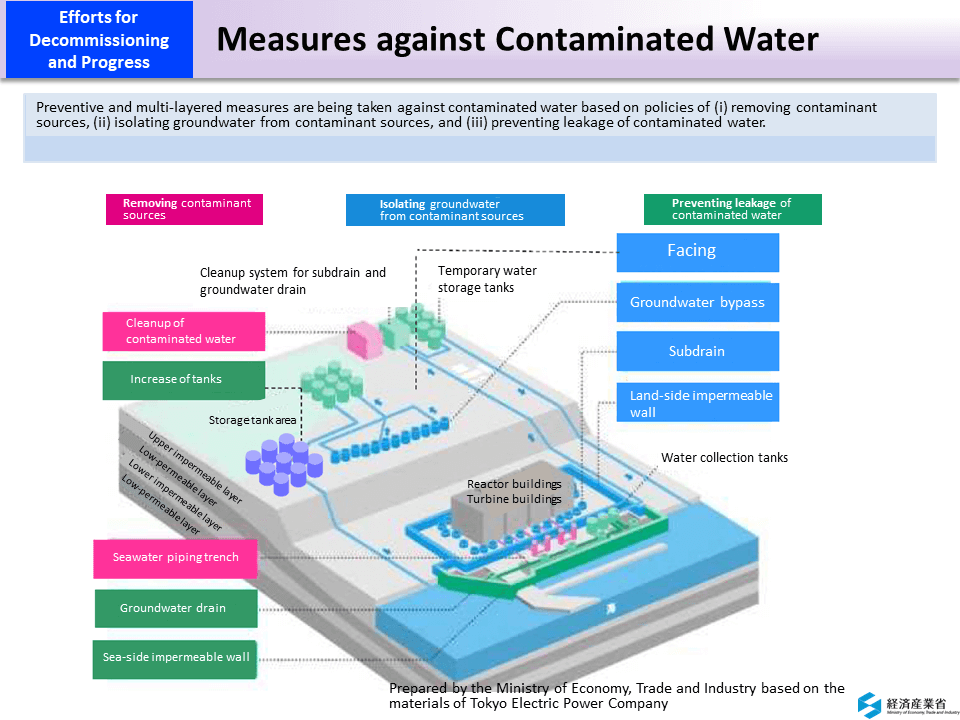Measures against Contaminated Water
< Policy 1: Removing contaminant sources >
(i) Clean up contaminated water with regard to 62 types of radionuclides excluding tritium(*) by the use of the Advanced Liquid Processing System (ALPS) and other systems
(ii) Pump up highly contaminated water accumulated in the underground tunnel (trench) on the sea side of the buildings and fill and block the trench at the same time
⇒ Removal of contaminated water from the seawater piping trench and filling thereof was completed at Units 2 to 4 by December 2015.
* Tritium is an isotope of hydrogen and exists in nature, in tap water and even in the human body. Comprehensive deliberations not only from a technological perspective but also from a social perspective are underway concerning the management of the water that has been treated and is stored in tanks.
< Policy 2: Isolating water from contaminant sources >
(i) Pump up groundwater on a hill on the mountain side of the buildings to suppress inflow of groundwater around the buildings (groundwater bypass)
(ii) Pump up groundwater using the subdrain (a well near the buildings) to lower the groundwater level, thereby suppressing inflow of groundwater into the buildings and outflow of groundwater into the area on the sea side of the buildings
(iii) Construct a frozen soil wall closely around the buildings to suppress inflow of groundwater from outside of the frozen soil wall
(iv) Suppress infiltration of rainwater into soil by facing (pavement of the surface) to reduce the amount of groundwater and suppress inflow of groundwater into the buildings
⇒ By these preventive and multi-layered measures, the amount of contaminated water generated in a day decreased from 500m3 in May 2014 to 200m3 in the first half of FY2017.
< Policy 3: Preventing leakage of contaminated water >
(i) Construct a sea-side impermeable wall made of steel pipes to reduce outflow of groundwater containing radioactive materials into the sea
(ii) Pump up groundwater using the groundwater drain in the seawall area to suppress outflow of groundwater into the sea
(iii) Secure tanks to store contaminated water generated every day and accumulated water in the buildings in a planned manner
⇒ The sea-side impermeable wall was completed in October 2015 and radioactivity concentrations in the port decreased significantly.
- Included in this reference material on February 28, 2018

